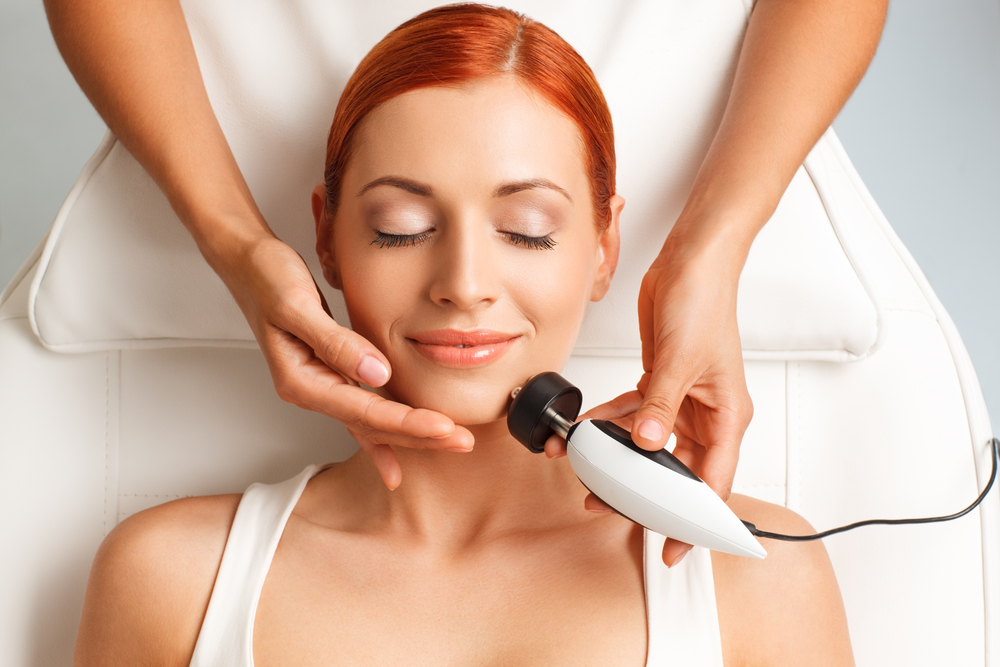
Are Radiofrequency Treatments Safe?
Lasers, Intense Pulsed Light, Ultrasounds–and yes, radiofrequency. When you really take a step back and look at all the amazing technologies we use for the sole purpose of getting more bang for our buck, for trying to get our body to run and peak performance and extract as much beauty and aesthetics out of it as possible–it’s sort of amazing.
We probably would have never dreamed of using radiofrequency for the sole purpose of heating the deepest layers of the skin and induce collagen production, but that is exactly how the technology is used: as a fat reduction method, skin rejuvenation method, a skin tightening method, and many more.
Radiofrequency when it comes to skin tightening is released at around 450 kilohertz — fairly slow for skin tightening, and much slower than light for example. It’s a very calm and slow form of energy.
The technology is useful for boosting collagen and encouraging cell turnover because it can penetrate the deeper levels of the. Contrast this with lasers, useful resurfacing the skin on its surface.
This ties back to the lower-frequency, which can bypass the epidermis without harming the tissue.
Heat causes the underlying tissues to contract, in addition to the collagen production that is stimulated, leading to a healthier underlying structure and skin tone.
Both of these work synergistically to provide a tightening effect.
But Is It Safe?
Of course, the question that patients want to know is if this technology is safe. After all, we live in a world where some claim that cell phones can cause cancer–how do we know that letting these waves bypass the epidermis is safe for our overall health?
The fact of the matter is, we live in a world where we’re surrounded by waves of radiofrequency energy every day. We use our Internet, we watch the television–and yes, we use cellphones. This fact hasn’t escaped health officials.
What’s the body of evidence say? Essentially, there’s no conclusive evidence that radiofrequency actually increases a risk for cancer. While the World Health Organization lists it as “possibly carcinogenic,” it’s worth noting that coffee is also listed as ‘possibly carcinogenic.’
So, why the label at all if no strong empirical evidence has been found? Oftentimes, in trying to understand possible harm, scientists expose animals to particularly high levels of a substance.
In this case, in one study, rats were exposed to radiofrequency energy for nine straight hours a day–and found that tumors possibly formed at a higher rate. This study, however, wasn’t replicated.
Overall, the answer seems to be that radiofrequency doesn’t seem to be a particular cause for concern — at least, not more than the coffee we drink.
What about other risks?
Patients might worry about other risks from radiofrequency, such as being burned. However, so long as patients find an experienced practitioner, this isn’t an issue. The technology used to perform the procedure is very precisely controlled–much in the same way that lasers are.
During the procedure, the temperature of the tissue is monitored so that it can both have the optimal effect and not be overheated.
In general, the empirical evidence shows that radiofrequency is an eminently safe technology, and, in particular, its usage for skin tightening has proven safe in a variety of domains.
With a skilled technician, patients should never be at any real risk for burns — all the more reason for patients to do their research and only have radiofrequency treatments performed by qualified providers with accreditation.
Want to know more about radiofrequency treatments like truSculpt 3D and how they can benefit you? Call Hagerstown Dermatology today to schedule an appointment.

Post a comment